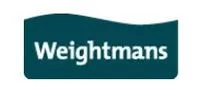2023 will see a new approach to inspection by CQC. What can be expected and how can the health industry prepare?
The advent of 2023 will see a new approach to inspection by CQC. There have been trials of the new approach through 2022 with some providers, but the intention is to roll this out for everyone in 2023. The precise date is to be finalised but it's coming this year for both providers and commissioners, where CQC will have the extended role set out below. The changes involved can be found below.
A single assessment framework
Previously CQC used different frameworks to assess hospitals, adult social care, and primary care services. It will now be adopting a single assessment framework to simplify the assessment process and have one set of expectations. It is hoped that this will be clearer in identifying what is quality care and good service. The framework will apply to all registered health and care providers and will also cover the integration and commissioning roles of Integrated Care Boards and Local Authorities -which CQC are now to assess too.
A different type of inspection
Previously site inspections have been the core of CQC's assessment of the service delivered by Registered Providers. Information included in the subsequently publicised inspection report has arisen from what has been evidenced at that point of collection. However, CQC are now moving towards a continuous approach to evidence gathering to enable a much more responsive assessment of a service. With that in mind, the gathering of information will include:
- Submissions received from care providers
- Contact with people using the service, including complaints made to CQC
- Formal CQC Notifications
- Information from third parties such as the police, commissioners, and safeguarding
This wider information gathering will enable CQC to establish "dynamic dashboards" to inform regulatory action, to make information more readily available to the public (a core purpose for the existence of CQC), and to provide a more responsive approach to ratings. It is hoped that ratings will change more often – obviously, there can be occasions where this is a benefit to an improving service, although perhaps it might be less helpful in situations where a provider faces a reduction in their rating.
Quality Statements and Topic Areas
The five key questions currently used to assess a service (Safe, Effective, Caring, Responsive and Well-led) will remain, but the key lines of enquiry ("KLOEs") are being retired. Instead, under each of the topic areas, there will be a series of "quality statements" (34 in all) to assess how that topic is being provided. The approach to assessment is considered in the form of a pyramid: at the top of the pyramid are the five key questions, followed then by the quality statements, and then evidence. The evidence will come from the 6 categories of evidence that CQC has published as being collected to allow them to make decisions:
- People's experience of the service
- Staff and leaders' feedback
- Partners' feedback
- Observation
- Processes
- Outcomes
This will enable CQC to replace some of the long inspection reports currently provided with much shorter scored statements, and even benchmarking against any other comparable providers.
Ratings
The four ratings of Outstanding, Good, Requires Improvement and Inadequate will remain. However, it is intended that ratings will be based upon a wider range of information and based on a much more immediate and dynamic approach than the one-off inspection approach used previously. This "rolling" approach will also mean that ratings can be more easily changed as evidence will be collected on an ongoing basis. CQC have said that ratings can be changed at any time - but it remains to be seen what will prompt this, and the extent to which providers will have forewarning and an opportunity to respond in advance.
What will this all mean?
Like anything new, it remains to be seen how this will work when it is implemented at scale across the whole sector. What is, however, clear is that CQC will continue to focus on service user's choice and personalisation of their care, which are referred to as a "golden thread". It will also continue to keep a close eye on suspected closed cultures. The approach seems to encourage a system of regulation which is intended to be as closely based on the experiences of service users and other partners in the health and social care system, as possible
The use of benchmarking will contribute to that approach. It remains to be seen whether this will stifle innovation.
Historically CQC has been accused of inflexibility in making allowances for care providers who experience stresses in the system, such as those caused by the pandemic or the staffing crisis in the sector. There is clearly a risk that the new more rolling approach to ratings may mean a provider's rating falls quickly – but it remains to be seen how quickly it will be increased.
The previous experience of providers who have turned around struggling services would suggest that there is a need for CQC to focus on acknowledging improvements just as quickly as they do problems.
As adverse information will be considered when reviewing a provider's rating, providers should increase their focus on the collection of positive reports, comments, and plaudits. We all know that in life, a complaint tends to land more heavily than congratulations!
The dynamic approach will also reveal those services who are not effectively remedying issues in a timely manner which could give rise to greater opportunity for enforcement action to be taken.
The new system should however address a long-standing concern that reports take a long time after the inspection to be provided. Speedier production of shorter reports will thus make information available to the public promptly – although some providers will just find they get the bad news more quickly!
The content of this article is intended to provide a general guide to the subject matter. Specialist advice should be sought about your specific circumstances.


